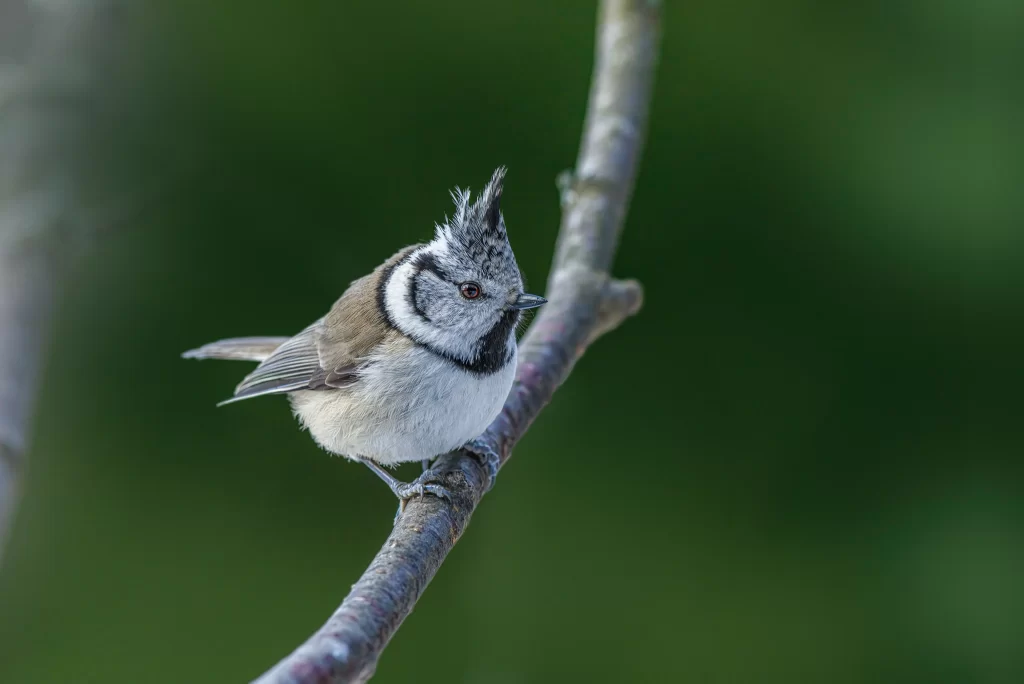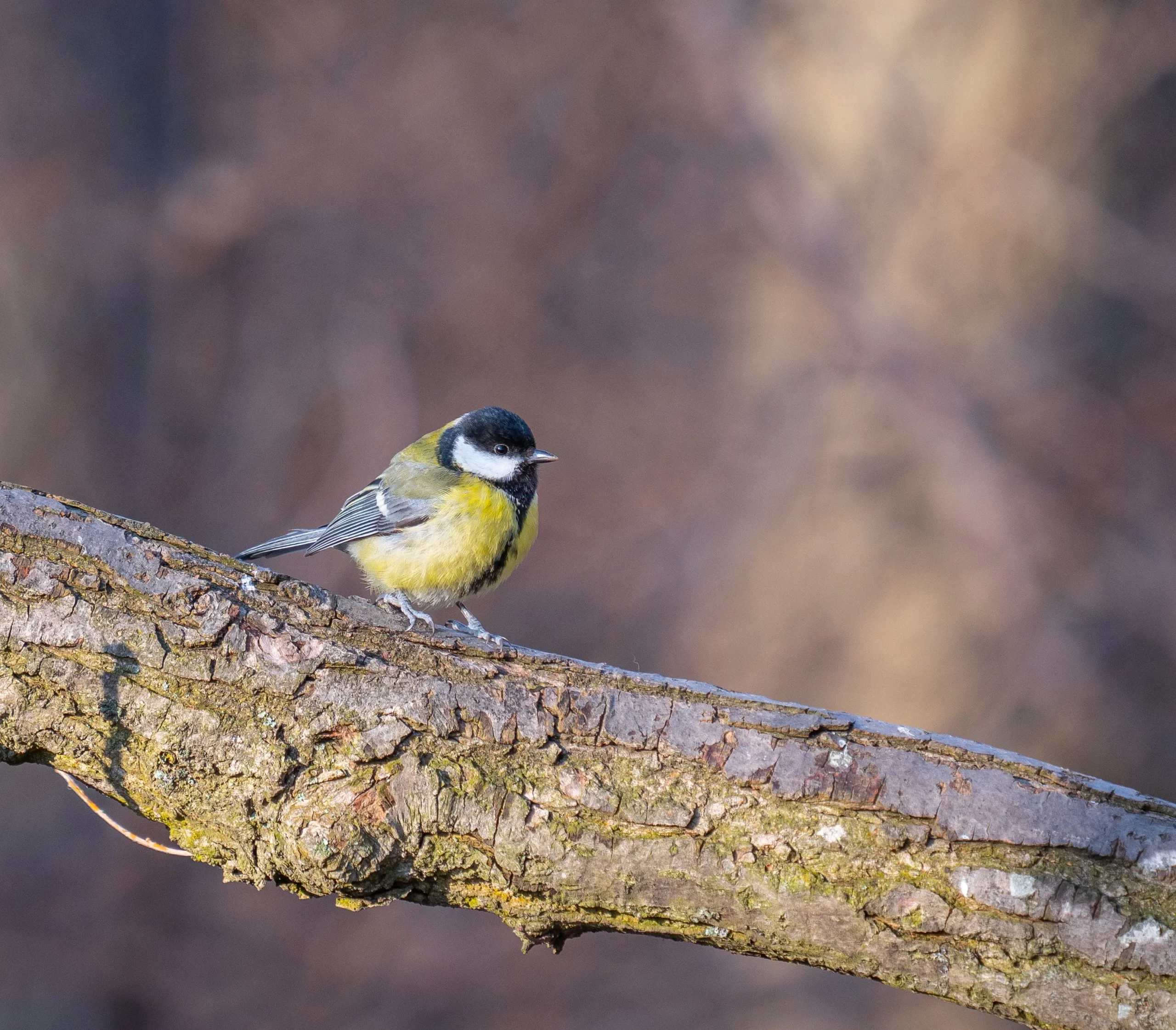The different tit birds have gained worldwide popularity thanks to their amusing names and tendencies to regularly visit backyard bird feeders. Despite their reputation, you may wonder, “How many tit birds are there in the UK?”. Well, the United Kingdom has tremendous tit diversity, being home to 7 different types of tit birds, but how well do you know the British tit birds?
If you’re hoping to learn all about tits, you’ve come to the right place! Keep reading as I discuss the 7 UK tit birds and provide thorough details about each.
Table of Contents
Shared Tit Traits
Six of the seven types of tit birds (UK) belong to the same family – the Paridae family. This is the same family to which chickadees and titmice in North America belong. The odd one out is the Long-tailed Tit, which belongs to the Aegithalidae family. Although not all tits in the United Kingdom belong to the same tit family of birds, they nonetheless share plenty of similar traits.
First, all types of tit bird will routinely visit bird feeders that are stocked with seeds. They may visit feeders at any time of year, but winter tends to be the busiest time. Another fact about UK tit birds is that they’re all small songbirds with stubby bills. The Long-tailed Tit measures as much as 15 cm in length, making it the biggest of the tit bird types on this list.
Except for Long-tailed Tits, all UK tits nest in tree cavities. This means that some will happily consider nesting in a birdhouse if it is available to them. Unlike species such as Common Blackbirds, the tits on this list are nonmigratory. Lastly, know that all British tit birds are sexually monomorphic, meaning males and females look the same.
Now, let’s discuss each of the different types of tit birds in the United Kingdom.
7 Types of Tit Birds (UK)
Coal Tit

Identification
British Coal Tits have white cheeks, black heads, and black throats. Their undersides are an unmarked pale green colour, while their backs are greyish-brown. Subtle white wingbars can be seen on their wings, and a white nape is distinctive. They are the tiniest of the British tit family of birds and among the smallest birds in the UK.
Habitat and Range
Coal Tits in the UK are not very choosy in their habitat requirements – they may be found in either coniferous woodlands, mixed coniferous and deciduous woodlands, parks, windbreaks, and gardens.
There are a few islands within the United Kingdom where Coal Tits cannot be found. Otherwise, these tit bird types are distributed throughout the entire UK.
Abundance and Tit Tidbits
Nearly 180,000 Coal Tits have been observed in the United Kingdom, making them a species that is regarded as common.
- Coal Tit may store thousands of seeds in anticipation of the winter
- Adult Coal Tits tend to associate with their mate and other mature individuals during winter. On the other hand, first winter Coal Tits seem to only occasionally form loose flocks with other young Coal Tits.
Crested Tit

Identification
Crested Tits certainly stand out with their appearance, being the only tit with a crest in the United Kingdom. They’ve got pale grey faces with a bridled grey and black crest. Their cheeks are a darker grey than the rest of their faces, and a black boomerang is situated behind their cheeks. A black collar surrounds their head and culminates in a black throat. Crested Tits have greenish-grey backs and unmarked pale undersides.
Habitat and Range
Crested Tits have stronger ties to mature woodlands than the other tits on this list. Therefore, they are seldom observed in any place other than coniferous or mixed woodlands.
Crested Tits have the smallest range of any type of tit bird in the UK, as they are only native to portions of the Scottish Highlands. Their range extends from Cannich east to Braemar and south to Etteridge. They do not tend to be any further north than Invergordon.
Abundance and Tit Tidbits
It should come as no surprise that Crested Tits are the rarest British Tit birds. Only 2,200 have been reported on eBird, and they are a highly sought species for UK bird listers.
- Crested Tits excavate their own nests in decaying tree stumps.
- One study of Scottish Crested Tit populations found that about half of all nesting attempts fail.
Eurasian Blue Tit

Identification
Eurasian Blue Tits are colourful birds with blue caps, dark blue collars, dark eyelines, and white faces. These types of tit (bird) have unmarked yellow-green undersides, while their backs are green. Eurasian Blue Tit birds also have blue wings and tails. Their wings have some white colouration.
Habitat and Range
Eurasian Blue Tits are among the most adaptable tits, being able to thrive in dense forests or urban backyards. They may also be found in gardens, parks, and early successional habitats.
These British tits thoroughly cover the entirety of the United Kingdom, even being found on the northernmost Shetland Islands.
Abundance and Tit Tidbits
These yellow tit birds are a familiar sight to most in the UK, as more than 650,000 have been observed within the country.
- Some Eurasian Blue Tits have been found to add plants with strong smells to their nests. This is thought to potentially provide a means of deterring certain insects or parasites from the nest.
- One study discovered that the fewer neighbouring tits are nearby, the earlier Eurasian Blue Tits tend to lay eggs.
Great Tit

Identification
Great Tits have black faces and white cheeks. Their undersides are yellow-green save for a black streak that extends from their throats to their undertail coverts. Their backs are bluish-green with a tad bit of white.
Habitat and Range
Great Tit birds may inhabit areas such as forested backyards, parks, wooded suburbs, and dense forests.
These big tit birds are distributed throughout the United Kingdom including the Shetland Islands of northern Scotland.
Abundance and Tit Tidbits
Nearly 550,000 Great Tit observations of these birds with funny names have been submitted to eBird in the UK. This makes them the tit with the second-most observations in the country.
- Some populations of Great Tits are known to coordinate egg-laying with the time in which caterpillars will be most numerous.
- Studies have confirmed that Great Tits do just as well in forest fragments as they do in large, unfragmented tracts of forest.
Long-tailed Tit

Identification
The entire underside of a Long-tailed Tit is white and unmarked. They’ve got black stripes above the eyes that connect to their black backs. Their tails are black with white outer tail feathers. Long-tailed Tits have the smallest bill of any tit on this list.
Habitat and Range
Long-tailed Tits are often observed travelling in groups throughout wooded habitats. They do not tend to be found in densely forested areas, instead seeming to prefer parks, backyards, and forested towns.
This type of tit bird is widely distributed in the UK, being found everywhere save for a few of the Shetland Islands.
Abundance and Tit Tidbits
More than 290,000 Long-tailed Tits have been observed in the United Kingdom, making them the third most common of the different types of tit birds (UK). They do better in urban environments compared to some of the other tits on this list.
- Long-tailed Tits have cooperative breeding systems in which helper birds often help parents to raise young.
- Long-tailed Tits develop specific calls that can be recognized by family members.
Marsh Tit

Identification
Marsh Tits have black caps and a small patch of black on their throats. Their faces are white, while their backs are brownish grey. They’ve got unmarked undersides that are cream-coloured.
Habitat and Range
The names of Marsh Tits are a bit misleading, as these types of tit birds do not tend to be found in marshes. Instead, look for these tit bird types in deciduous or mixed woodlands, parks, and backyards.
These small tit birds are not particularly common in northwest Wales, and they are only found in a few areas in southern Scotland. Most of Scotland is not appealing habitat to these birds given that this species does not use coniferous trees. Otherwise, Marsh Tits survive year-round in most of England.
Abundance and Tit Tidbits
Around 25,000 Marsh Tits have been reported to eBird from the United Kingdom. Marsh Tit populations in the UK are declining.
- Marsh Tits are not as adaptable as many of their fellow British tit birds, as they require mature forests with healthy understories to thrive. They don’t do well in any other habitats.
- Marsh Tits may reuse the same cavity as the previous year, and research has found that birds who reuse nest cavities have very similar breeding success compared to those who use new cavities.
Willow Tit

Identification
Willow Tits are very similar to Marsh Tits, leading to a difficult tit identification challenge. However, Willow Tits tend to have more extensive black colouration on the throat. Moreover, a pale wing panel can be seen on the wings when birds are perched. This feature is absent in Marsh Tits. Otherwise, the two species look very similar.
Habitat and Range
The names of these creatures are somewhat accurate, as they do—indeed—inhabit riparian areas with willow trees. However, they can also be found in coniferous forests or a mix of coniferous and deciduous in composition. These types of tit (bird) tend to be found in habitats that are more overgrown compared to Marsh Tits.
Willow Tits have seemingly decreased in the United Kingdom in the past few decades. They were formerly regular around Norwich and Cambridge in eastern England, but they are now quite uncommon in this region. Moreover, they are almost entirely absent from southern England. Willow Tits barely venture into the southern portion of Scotland, but they are not expected north of Galashiels.
Abundance and Tit Tidbits
Willow Tits are quite localized in the United Kingdom. They are common in central England around Manchester, Liverpool, and Sheffield, but they’re uncommon to unexpected elsewhere. Overall, just over 9,000 Willow Tits have been reported in the United Kingdom to eBird. Willow Tit populations in the UK are in decline due to habitat loss and competition with birds such as House Sparrows.
- The oldest Willow Tit recorded in the United Kingdom was an 11-year-old near Nottingham.
- Willow Tit populations have declined in the UK thanks to habitat loss and increased competition with other birds. One paper even suggests that humans may need to stop feeding birds if they hope to preserve British Willow Tit populations.

